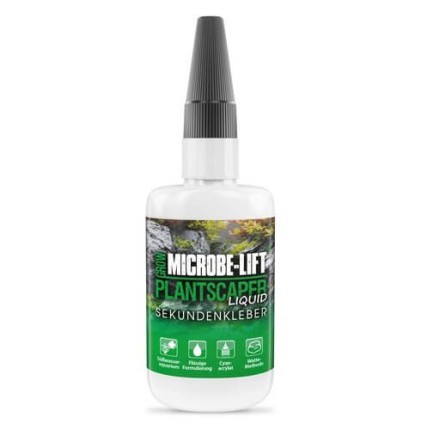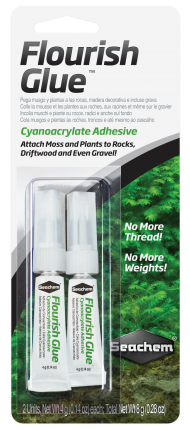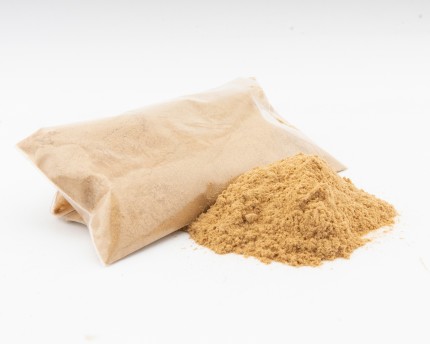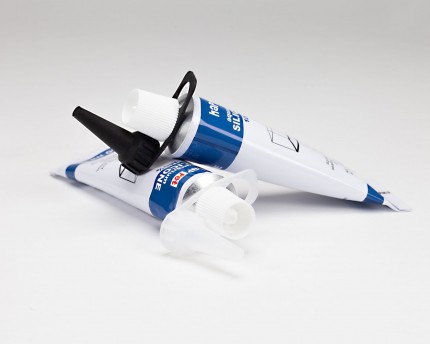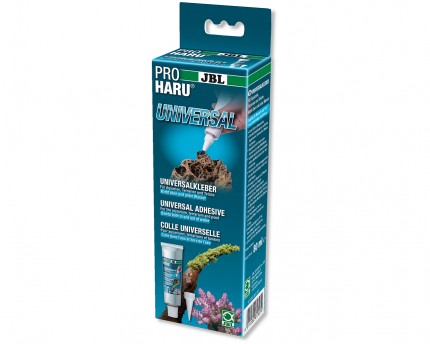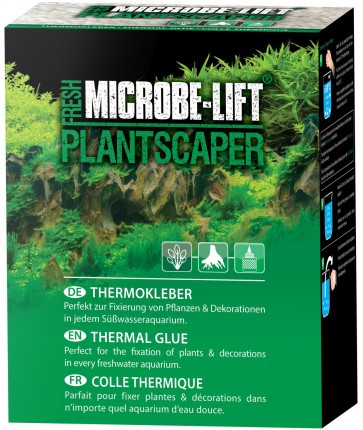Please never use normal kitchen silicone or sanitary silicone for your aquarium: These adhesive materials are usually equipped with fungus-inhibiting substances, which can be deadly in the aquarium for the fish and especially for dwarf shrimps. The use of a special aquarium silicone is absolutely necessary for work in and on the aquarium! It is acetic cross-linking and not equipped with anti-fungal properties, aquarium silicone therefore does not release any toxins into the water.
We only stock silicone from the well-known aquarium manufacturer JBL - for the sake of the fish and shrimp!
Please note, especially for repair work in the aquarium, that silicone does not adhere to silicone. You must first clean leaking silicone seams thoroughly before re-gluing and degrease the glass with isopropanol (isopropyl alcohol) after cleaning so that the new seam will hold. This new seam must then be drawn so that it protrudes 0.5-1 cm to the left and right of the old silicone seam so that everything is really properly sealed. Then wet the seam with a little water and dishwashing liquid and pull it smooth with the help of a scraper or a special tool, a spatula for silicone seams from the hardware store. Such wide seams are more likely to be applied in the background of the aquarium, on the front or side glass they really do not look good.
In highly visible places, it is better to completely remove the old silicone seam. To do this, cut out the pane with a sharp knife or a thin wire. Scrape off the silicone residue with a sharp razor blade and remove the last fine layer with vinegar essence. Then degrease the glass again with isopropyl alcohol and you can draw the new silicone seam.
Also to glue a hamburger mat filter into the aquarium, the use of aquarium silicone is useful and advisable. To do this, cut cable shafts to the height of the aquarium and glue them to the aquarium glass with silicone so that the filter mat, which will later be pushed into the cable shafts, sits in an arc in the corner. A pump is attached behind the filter mat.
Crab burrows made of slate slabs, lava chunks and so on can also be glued nicely with aquarium silicone. You can also use it to glue a root to the bottom of the aquarium that would otherwise always float up, plus root pieces can be glued together with aquarium grade silicone. In this way, you can create a beautiful hardscape even from individually rather less pretty roots.
Also very attractive is an aquarium back wall, for example, made of lava chunks, which are glued to a suitably cut glass pane. Between these lava chunks you can place perching plants such as bolbitis, anubias, bucephalandra and java fern or plant mosses in the gaps. Lava chunks or slate can also be used to create planters for aquariums or terrariums, for example, with the help of silicone.
Multi-level crab burrows made of PVC pipes can also be glued with silicone. If you coat these tubes with a thin layer of silicone after curing and then roll them in sand or fine gravel, you will get an incredibly natural look for the crab cave.
Important: Silicone should always cure for at least 24 hours before stressing the seams.
When it sets, acetic curing silicone smells intensely of vinegar. Do not inhale too deeply!
Here in our online store, you can buy aquarium-grade silicone in transparent or black in various container sizes from the trusted brand JBL.
For a bubble-free attachment of the black back wall or photo back wall, the back wall adhesive JBL Fixol is well suited. With it you can attach the aquarium back wall to the rear aquarium pane without annoying, unsightly bubbles - of course from the outside ..

